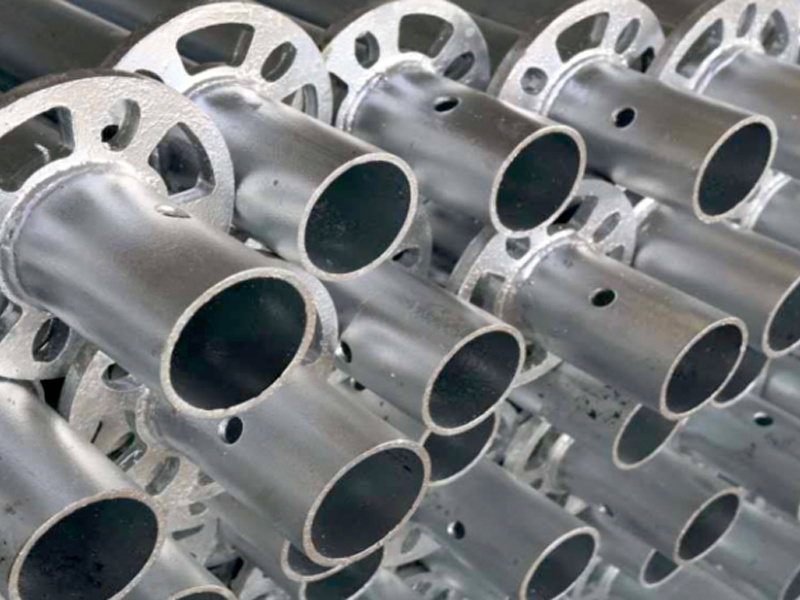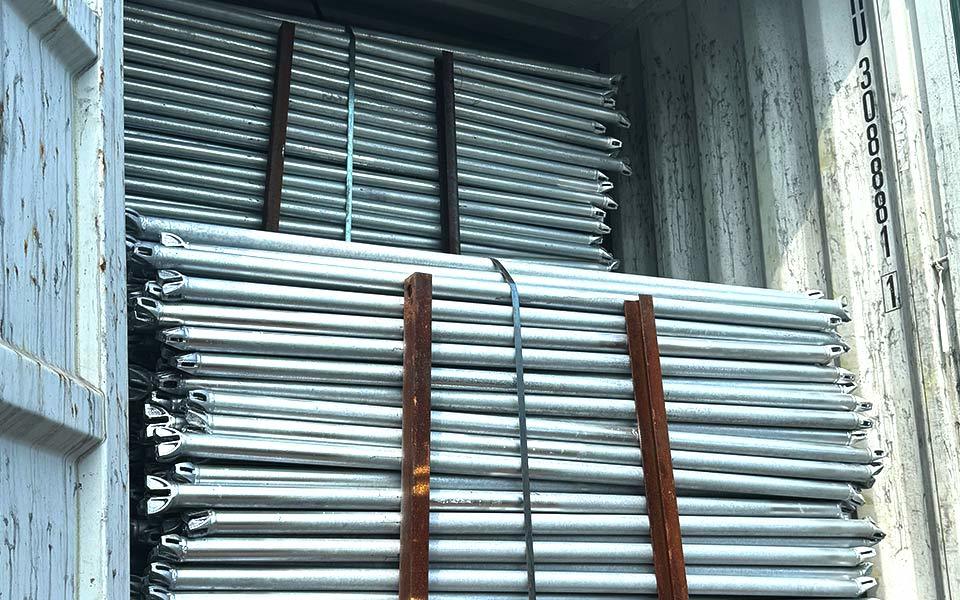Key Points to Note During Construction
Release time:
16 14:49:31
Construction requirements for template supports: Double-directional horizontal bars must be fully set between vertical rods at specified intervals to ensure sufficient design stiffness in both directions. When the loads of beams and slabs differ significantly, different spacing of vertical rods may be used, but it is advisable to vary the spacing in only one direction while keeping it constant in the other direction.
Construction requirements for the template support: Double-direction horizontal bars must be fully set between vertical rods according to the step distance to ensure sufficient design stiffness in both directions. When the load of beams and slabs differs significantly, different spacing of vertical rods can be used, but it is advisable to vary the spacing in only one direction while keeping it constant in the other direction.
Design of vertical rod step distance: Based on the load of the frame structure and the axial force variation of vertical rods at different heights, either equal step distance or variable step distance can be adopted. The step distance for high support frames should be between 0.9 to 1.5m and should not exceed 1.5m.
Design of overall integrity of the frame: The use of wheel-lock scaffolding is strictly prohibited for tall template projects, and the height of the support frame should be less than or equal to 5m. In any case, horizontal reinforcement layers must be set at the top and bottom of the high support frame (the layer where the base rod is set). The template support frame must have continuous units of more than four spans in both longitudinal and transverse directions, and areas that do not meet the spacing of vertical rods should be constructed with coupler-type steel pipe support frames, which must be completely connected with other frames.
Design of cross braces: Cross braces should be fully set along the outer surface of the support frame, using coupler-type steel pipes. In the middle, they can be set every 10 to 15m according to needs and the size of the frame grid.
Requirements for the construction of the support frame: Ensure that the vertical deviation of the vertical rods and the horizontal deviation of the horizontal rods are less than the relevant specified requirements; the design of the foundation supports must meet the load-bearing requirements.
Requirements for construction use: Carefully design the concrete pouring plan to ensure balanced loading during the construction of the template support; strictly control the actual construction load to not exceed the design load; during the pouring process, assign personnel to inspect the support and bearing conditions, and promptly address any issues of sinking, loosening, or deformation.
Key words:
Learn more about industry dynamics
There is a strong local logistics system to ensure safe and fast delivery of products. The company's products are widely used in construction, bridge tunnel, equipment installation, oil field, shipbuilding and other industries. won the recognition and praise of the vast number of users at home and abroad.
Contact
Responsible E-mail:
hx@stscaffold.com
Contact information of responsible person:
Win customer satisfaction with better service

Scan code to browse the official website
Learn more about scaffolding at any time
Message Form









